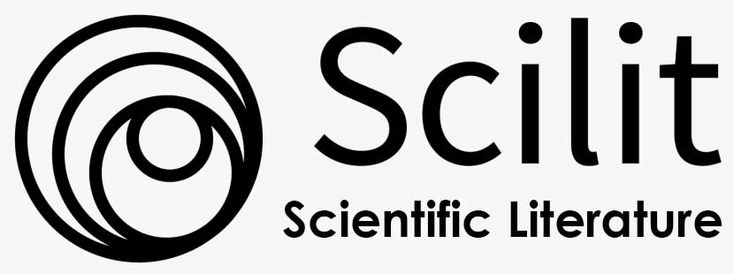ANALYSIS OF BUDURAN RIVER WATER QUALITY USING QUAL2KW AS RAW MATERIAL FOR SIWALANPANJI IPA
Abstract
Buduran River, Sidoarjo Regency, is one of the rivers in Sidoarjo City, which has various functions. The primary function of the Buduran River at the moment is to supply raw material water for one of the PDAM Delta Tirta Sidoarjo, namely the Drinking Water Treatment Plant (IPAM) branch in Siwalanpanji. For this reason, efforts are needed to maintain and monitor river quality using the Qual2Kw method. QUAL2Kw method begins with the determination of 3 segments. Furthermore, an analysis of hydraulic data, water quality, and pollutant sources was carried out, determining the scenarios used, running the QUAL2Kw program, and calculating the carrying capacity of pollution loads. River water quality parameters include pH, BOD, COD, TSS, Phosphate, and Nitrate. Applying the QUAL2Kw method in evaluating the Buduran River with three scenarios according to existing conditions, initial conditions according to quality standards, and trial & error with maximum pollutant load. The capacity value is determined based on the calculation of the difference in pollutant load in scenario three and scenario 2. The result is that the Buduran River is classified as a polluted river, and the negative (-) pollutant load capacity indicates that management is necessary to reduce pollutant loads.
Keywords
Full Text:
PDFReferences
Camargo, R. de A., Calijuri, M. L., Santiago, A. da F., Couto, E. de A. de, & Silva, M. D. F. M. e. (2010). Water quality prediction using the QUAL2Kw model in a small karstic watershed in Brazil. Acta Limnologica Brasiliensia, 22(4). https://doi.org/10.4322/actalb.2011.012
Chapra, S., & Pelletier, G. (2008). A Modeling Framework for Simulating River and Stream Water Quality. Documentation and User Manual.
Cho, J. H., & Ha, S. R. (2010). Parameter optimization of the QUAL2K model for a multiple-reach river using an influence coefficient algorithm. Science of the Total Environment. https://doi.org/10.1016/j.scitotenv.2010.01 .025
Dewa, C., Susanawati, L. D., & Widiatmono, B. R. (2016). Daya Tampung Sungai Gede Akibat Pencemaran Limbah Cair Industri Tepung Singkong di Kecamatan Ngadiluwih Kabupaten Kediri. Jurnal Sumberdaya Alam Dan Lingkungan, 2(1), 35–43
Ismail, Z. (2011). Monitoring trends of nitrate, chloride and phosphate levels in an urban river. International Journal of Water Resources and Environmental Engineering, 3(7), 132–138.
Poniman, L. (2021). PEMANFAATAN ARANG SEKAM PADI DAN KULIT PISANG KEPOK SEBAGAI ADSORBEN UNTUK MENURUNKAN COD (Chemical Oxygen Demand) DAN BOD (Biological Oxygen Demand) PADA AIR SUNGAI ENIM. Jurnal Redoks, 6(2), 92– 99.
Rao, E. V. S. P., Puttanna, K., Sooryanarayana, K. R., Biswas, A. K., & Arunkumar, J. S. (2017). Assessment of nitrate threat to water quality in India. In The Indian nitrogen assessment (pp. 323–333). Elsevier.
Rusnugroho, A., & Masduqi, A. (2012). Aplikasi QUAL2Kw sebagai Alat Bantu Perhitungan Daya Tampung Beban Pencemaran Kali Madiun ( Segmen Kota Madiun ). SCIENTIFIC CONFERENCE OF ENVIRONMENTAL TECHNOLOGY.
Sa’adah, N. R., & Winarti, P. (2009). Pengolahan limbah cair domestik menggunakan lumpur aktif proses anaerob. Jurusan Teknik Kimia Fakultas Teknik Universitas Diponegoro Semarang.
Tanjung, R. H. R., Maury, H. K., & Suwito, S. (2018). Pemantauan Kualitas Air Sungai Digoel, Distrik Jair, Kabupaten Boven Digoel, Papua. JURNALBIOLOGI PAPUA, 8(1). https://doi.org/10.31957/jbp.43
Vandra, B., Sudarno, & Nugraha, W. D. (2016). Studi analisis kemampuan self purification pada sungai progo ditinjau dari parameter biological oxigen demand (BOD) dan dissolved oxigen (DO). Jurnal Teknik Lingkungan, 5(4).
Yogiarti, N., Setiawan, D., & Parthasutema, I. A. M. (2014). Analisis Kadar Fosfat Air Sungai di Desa Beng. Gianyar dengan Metode Spektofotometri Uv-Vis. J. Chemistry Laboratory, 1(2).
Yohannes, B. Y., Utomo, S. W., & Agustina, H. (2019). Kajian Kualitas Air Sungai dan Upaya Pengendalian Pencemaran Air. IJEEM - Indonesian Journal of Environmental Education and Management, 4(2). https://doi.org/10.21009/ijeem.042.05
DOI: http://dx.doi.org/10.21776/ub.jeest.2022.009.02.1
Refbacks
- There are currently no refbacks.

This work is licensed under a Creative Commons Attribution 4.0 International License.







